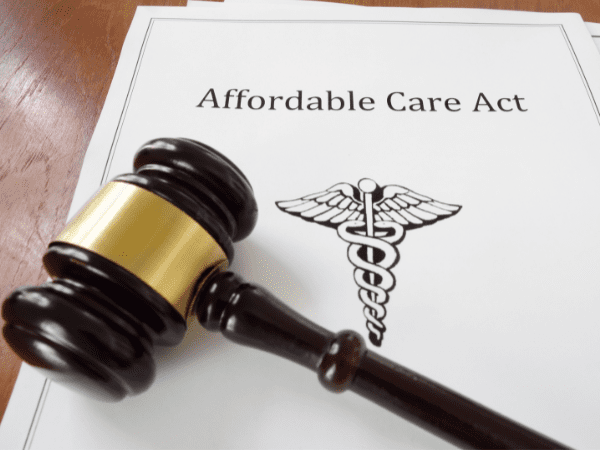2025 Play or Pay Affordability Percentage Released – 9.02%
Overview
The IRS released Revenue Procedure 2024-35 on September 6, 2024 (Revenue Procedure 2024-35), announcing the affordability percentage for the 2025 plan year increased to 9.02% (up from 8.39% in 2024, but nonetheless 0.48% below the statutory affordability percentage of 9.5%). The affordability percentage is the maximum permitted employee contribution percentage required to satisfy the employer mandate’s affordability standard under the Affordable Care Act. It is subject to annual inflation adjustments.
Employer Action Items
- As a result of this increase, many employers may have flexibility to increase employee contributions in line with the adjusted threshold percentage.
- Employers should consider applicable wellness incentives and surcharges, as well as certain opt-out and cash-in-lieu arrangements, as these funding strategies may factor into the affordability of an offer of ACA qualifying health coverage.
Summary
The affordability percentage is officially referred to as the Section 36B Required Contribution Percentage under Internal Revenue Code (“IRC”) Section 36B. The affordability percentage is used by employers subject to the Affordable Care Act’s (“ACA’s”) employer mandate (commonly referred to as the “pay or play” mandate), to assess the affordability of health plans offered to full-time employees. Employers subject to the employer mandate are referred to as applicable large employers (“ALEs”). The failure of an ALE to offer at least one “affordable” health plan option may result in a penalty assessment under Code Section 4980H(b) for each full-time employee who obtains coverage in the Marketplace and qualifies for a subsidy in lieu of enrolling in the employer sponsored coverage offered to such employee.
In addition, the IRS updated IRC Section 36B’s Applicable Percentage Table for the 2025 calendar year. The table is used to determine an individual’s eligibility for coverage subsidies.
General Overview of Affordability Safe Harbors
Because an ALE generally will not know an employee’s household income, the IRS has adopted three optional safe harbor methodologies that may be used to determine affordability:
- Form W-2 safe harbor;
- Rate of pay safe harbor; and,
- Federal poverty line safe harbor.
An employer may use one or more of the affordability safe harbors if it offers its full-time employees (and their dependents) the opportunity to enroll in minimum essential coverage under a health plan that provides minimum value with respect to the self-only coverage offered to the employees. Note that the affordability safe harbors are only used to determine whether an employer’s coverage satisfies the affordability test for purposes of the employer mandate. These safe harbors do not affect an employee’s eligibility for a subsidy in a federally facilitated or state Marketplace (which is based on the affordability of employer-sponsored coverage relative to an employee’s annual household income).
Form W-2 Safe Harbor
Under the Form W-2 safe harbor, an ALE may determine the affordability of its health coverage by reference to an employee’s wages from that ALE, instead of by reference to the employee’s household income. For this purpose, “wages” is the amount that is required to be reported in Box 1 of the employee’s Form W-2.
An ALE satisfies the Form W-2 safe harbor with respect to an employee if the employee’s required contribution for the calendar year for the ALE’s lowest cost, self-only, minimum value coverage, as offered during the entire calendar year, does not exceed 9.5% (as adjusted for the applicable year) of that employee’s Form W-2 wages.
To be eligible for the Form W-2 safe harbor, the employee’s required contribution must be a consistent amount or percentage of Form W-2 wages throughout the calendar year (or throughout the plan year for plans with non-calendar year plan years). Consequently, an ALE may not make discretionary adjustments to the required employee contribution for a pay period. A periodic contribution that is based on a consistent percentage of all Form W-2 wages may be subject to a dollar limit specified by the employer.
ALEs determine whether the Form W-2 safe harbor applies after the end of the calendar year and on an employee-by-employee basis, taking into account W-2 wages and employee contributions.
Rate of Pay Safe Harbor
The rate of pay safe harbor was designed to allow ALEs to prospectively assess affordability without the requirement of analyzing each employee’s wages and hours. For hourly employees, the rate of pay safe harbor allows an ALE to:
- Take the lower of the hourly employee’s rate of pay as of the first day of the coverage period (generally, the first day of the plan year) or the employee’s lowest hourly rate of pay during the calendar month;
- Multiply that rate by 130 hours per month (the benchmark standard for full-time status during a month); and
- Determine affordability for the calendar month based on the resulting monthly wage amount.
Specifically, the employee’s monthly contribution amount (for the self-only premium of the employer’s lowest cost coverage that provides minimum value) is affordable for a calendar month if it is equal to, or lower than, 9.5% (as adjusted for the applicable year) of the employee’s applicable hourly rate of pay multiplied by 130 hours. The final regulations allow an ALE to use the rate of pay safe harbor even if an hourly employee’s rate of pay is reduced during the year.
Respecting salaried employees, monthly salary is assessed as of the first day of the coverage period, rather than simply multiplying the employee’s hourly salary by 130 hours. However, if the monthly salary is reduced during the coverage period (including due to a reduction in work hours), the rate of pay safe harbor may not be used.
Federal Poverty Line Safe Harbor
An ALE may also rely on a design-based safe harbor using the federal poverty line (“FPL”) for a single individual. Employer-provided coverage is considered affordable under the FPL safe harbor standard if the employee’s required contribution for the calendar month for the lowest cost self-only coverage that provides minimum value does not exceed 9.5% (as adjusted for the applicable year) of the FPL for a single individual (respecting the calendar year of the testing), divided by 12.
As the FPL for the year is not made available until January of each year, the final regulations allow ALEs to use the poverty guidelines in effect within six months before the first day of the plan year for purposes of the safe harbor. The 2024 FPL for the 48 contiguous states and the District of Columbia is $15,060 (respecting a single person household). Thus, for a plan with a 2025 calendar year plan, to satisfy the FPL Safe Harbor, the monthly contribution cannot exceed $113.20 ($15,060 x 9.02% ÷12).
The FPL safe harbor allows ALEs to disregard certain employees in determining the affordability of health coverage (specifically, employees who cannot receive a Marketplace subsidy because of their income level or eligibility for Medicare, and therefore cannot trigger an ALE’s liability for an employer mandate penalty). The FPL safe harbor also provides ALEs with a predetermined maximum amount of employee contribution that in all cases will result in the coverage being deemed affordable.
Additional Information & Related Resources
- IRS Revenue Procedure 2024-35: https://www.irs.gov/pub/irs-drop/rp-24-35.pdf
- https://www.irs.gov/affordable-care-act/employers/questions-and-answers-on-employer-shared-responsibility-provisions-under-the-affordable-care-act#Affordability
For questions regarding this Alert or any other related compliance issues, please contact your Baldwin client experience team.
For more information
We’re ready when you are. Get in touch and a friendly, knowledgeable Baldwin advisor is prepared to discuss your business or individual needs, ask a few questions to get the full picture, and make a plan to follow up.
This document is intended for general information purposes only and should not be construed as advice or opinions on any specific facts or circumstances. The content of this document is made available on an “as is” basis, without warranty of any kind. The Baldwin Insurance Group Holdings, LLC (“The Baldwin Group”), its affiliates, and subsidiaries do not guarantee that this information is, or can be relied on for, compliance with any law or regulation, assurance against preventable losses, or freedom from legal liability. This publication is not intended to be legal, underwriting, or any other type of professional advice. The Baldwin Group does not guarantee any particular outcome and makes no commitment to update any information herein or remove any items that are no longer accurate or complete. Furthermore, The Baldwin Group does not assume any liability to any person or organization for loss or damage caused by or resulting from any reliance placed on that content. Persons requiring advice should always consult an independent adviser.
The Baldwin Group offers insurance services through one or more of its insurance licensed entities. Each of the entities may be known by one or more of the logos displayed; all insurance commerce is only conducted through The Baldwin Group insurance licensed entities. This material is not an offer to sell insurance.






